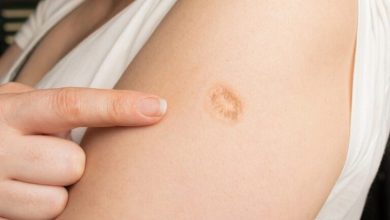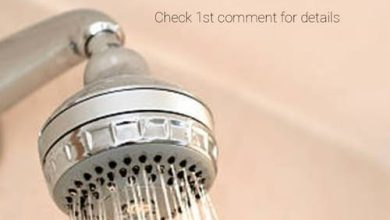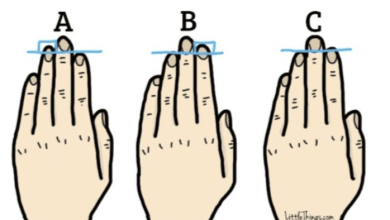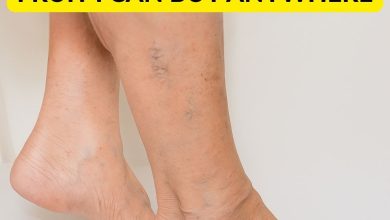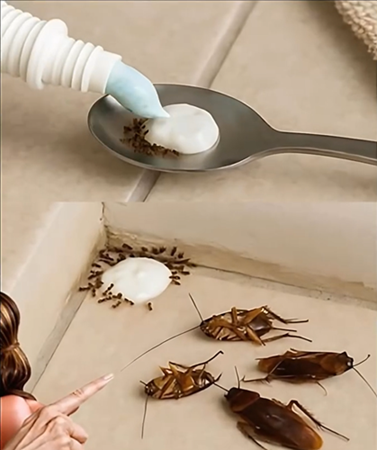
Say Farewell to Pests the Natural Way—No Chemicals Needed
There is nothing quite as unsettling as discovering flies buzzing relentlessly around your kitchen or spotting a cockroach darting across your floor. These unwelcome guests instantly disrupt the sense of comfort and security you work hard to maintain in your home. Your living space should be a sanctuary—a place where you feel safe, clean, and relaxed. However, encountering pests can quickly make your home feel dirty, unsafe, and stressful. Many people instinctively reach for chemical sprays and insecticides to deal with these problems. While these commercial solutions often provide quick relief, they come with several significant drawbacks.
Strong chemical odors can linger, potentially irritating your respiratory system and those of your family members. The toxic ingredients may pose health risks, especially to young children, elderly individuals, or pets who might accidentally ingest residue or inhale harmful fumes. Furthermore, repeated use of these chemicals can damage delicate surfaces in your home or contaminate your indoor air quality, causing longer-term environmental concerns. Fortunately, there is a more natural, effective, and budget-friendly alternative that you can create right at home with ingredients you probably already have in your kitchen pantry. This simple, chemical-free solution harnesses the combined power of mint toothpaste, baking soda, and white vinegar—each of which plays a unique role in repelling and disrupting the activity of common household pests such as flies, ants, cockroaches, and even some spiders.
Mint toothpaste contains peppermint oil, which has a strong, fresh scent known to deter many types of insects. The pungent smell of peppermint confuses pests’ scent trails and makes them less likely to invade your space. Baking soda is a natural cleaner and deodorizer that also reacts chemically when mixed with vinegar, producing a fizzing action that helps break down the sticky residues and pheromone trails that insects use to communicate and navigate within your home. White vinegar, on the other hand, is acidic and works to sanitize surfaces while also disrupting pest activity. Together, these ingredients create a safe and eco-friendly barrier that not only repels pests but also cleans the areas they frequent, helping to eliminate the conditions that attract them in the first place.
One of the greatest benefits of this homemade pest control remedy is its safety profile. Unlike commercial pesticides that contain harmful synthetic chemicals, this natural blend is non-toxic and safe for use around children, pets, and even sensitive household surfaces such as countertops, floors, and cabinetry. There are no harsh fumes, no lingering chemical residues, and no unpleasant smells—just a clean, fresh peppermint scent that leaves your home feeling refreshed. This makes it an ideal choice for anyone looking to maintain a healthy indoor environment while effectively managing pests.
If you would like to make this pest control solution yourself, here is a detailed step-by-step guide: Start by taking a small mixing bowl and adding one tablespoon of mint toothpaste, preferably one with a strong peppermint flavor. Next, add one tablespoon of baking soda to the bowl. Then slowly pour in one tablespoon of white vinegar. As you do so, the mixture will begin to foam and fizz due to the chemical reaction between the baking soda and vinegar. This fizzing is a key part of the cleaning and pest-disrupting action. Once the foaming subsides, add about 120 milliliters (or half a cup) of warm water to the bowl and stir gently to create a consistent solution. For enhanced pest-repelling power and a more pleasant aroma, consider adding a few drops of peppermint essential oil to the mix. This boosts the potency of the peppermint scent and makes the mixture even more effective against insects.
After preparing your natural pest repellent, you can apply it in several different ways to protect your home. Pour the solution into small containers, lids, or shallow dishes and place them strategically around areas that are prone to pest activity. These might include under kitchen sinks where moisture accumulates, near trash bins that can attract flies and roaches, along windowsills and doorways where insects enter, or next to pet feeding stations. You can also apply the mixture directly to problem areas using a cotton swab or soft cloth. Gently dab a thin line of the solution along cracks, baseboards, behind appliances, or other tight spaces where insects tend to hide or enter your home. Because the mixture may lose effectiveness over time, it’s important to replace it every few days to maintain continuous pest control.
Beyond simply repelling insects, this solution also works as a natural cleaner, helping to remove dirt, grease, and residues that can attract pests in the first place. Regularly using this remedy as part of your home cleaning routine can reduce the chance of infestations and create an environment that is less hospitable to bugs and other pests.
Overall, this natural, chemical-free pest control method offers an effective and safe alternative to harsh insecticides. It allows you to keep your home free of unwanted pests while preserving a healthy and toxin-free environment for your family, pets, and the planet. It is a perfect example of how simple, everyday household items can be combined in clever ways to solve common problems naturally and responsibly. By choosing this eco-friendly approach, you not only protect your home from pests but also contribute to a cleaner, safer world.
There is nothing quite as unsettling as discovering flies buzzing relentlessly around your kitchen or spotting a cockroach darting across your floor. These unwelcome guests instantly disrupt the sense of comfort and security you work hard to maintain in your home. Your living space should be a sanctuary—a place where you feel safe, clean, and relaxed. However, encountering pests can quickly make your home feel dirty, unsafe, and stressful. Many people instinctively reach for chemical sprays and insecticides to deal with these problems. While these commercial solutions often provide quick relief, they come with several significant drawbacks.
Strong chemical odors can linger, potentially irritating your respiratory system and those of your family members. The toxic ingredients may pose health risks, especially to young children, elderly individuals, or pets who might accidentally ingest residue or inhale harmful fumes. Furthermore, repeated use of these chemicals can damage delicate surfaces in your home or contaminate your indoor air quality, causing longer-term environmental concerns. Fortunately, there is a more natural, effective, and budget-friendly alternative that you can create right at home with ingredients you probably already have in your kitchen pantry. This simple, chemical-free solution harnesses the combined power of mint toothpaste, baking soda, and white vinegar—each of which plays a unique role in repelling and disrupting the activity of common household pests such as flies, ants, cockroaches, and even some spiders.
Mint toothpaste contains peppermint oil, which has a strong, fresh scent known to deter many types of insects. The pungent smell of peppermint confuses pests’ scent trails and makes them less likely to invade your space. Baking soda is a natural cleaner and deodorizer that also reacts chemically when mixed with vinegar, producing a fizzing action that helps break down the sticky residues and pheromone trails that insects use to communicate and navigate within your home. White vinegar, on the other hand, is acidic and works to sanitize surfaces while also disrupting pest activity. Together, these ingredients create a safe and eco-friendly barrier that not only repels pests but also cleans the areas they frequent, helping to eliminate the conditions that attract them in the first place.
One of the greatest benefits of this homemade pest control remedy is its safety profile. Unlike commercial pesticides that contain harmful synthetic chemicals, this natural blend is non-toxic and safe for use around children, pets, and even sensitive household surfaces such as countertops, floors, and cabinetry. There are no harsh fumes, no lingering chemical residues, and no unpleasant smells—just a clean, fresh peppermint scent that leaves your home feeling refreshed. This makes it an ideal choice for anyone looking to maintain a healthy indoor environment while effectively managing pests.
If you would like to make this pest control solution yourself, here is a detailed step-by-step guide: Start by taking a small mixing bowl and adding one tablespoon of mint toothpaste, preferably one with a strong peppermint flavor. Next, add one tablespoon of baking soda to the bowl. Then slowly pour in one tablespoon of white vinegar. As you do so, the mixture will begin to foam and fizz due to the chemical reaction between the baking soda and vinegar. This fizzing is a key part of the cleaning and pest-disrupting action. Once the foaming subsides, add about 120 milliliters (or half a cup) of warm water to the bowl and stir gently to create a consistent solution. For enhanced pest-repelling power and a more pleasant aroma, consider adding a few drops of peppermint essential oil to the mix. This boosts the potency of the peppermint scent and makes the mixture even more effective against insects.
After preparing your natural pest repellent, you can apply it in several different ways to protect your home. Pour the solution into small containers, lids, or shallow dishes and place them strategically around areas that are prone to pest activity. These might include under kitchen sinks where moisture accumulates, near trash bins that can attract flies and roaches, along windowsills and doorways where insects enter, or next to pet feeding stations. You can also apply the mixture directly to problem areas using a cotton swab or soft cloth. Gently dab a thin line of the solution along cracks, baseboards, behind appliances, or other tight spaces where insects tend to hide or enter your home. Because the mixture may lose effectiveness over time, it’s important to replace it every few days to maintain continuous pest control.
Beyond simply repelling insects, this solution also works as a natural cleaner, helping to remove dirt, grease, and residues that can attract pests in the first place. Regularly using this remedy as part of your home cleaning routine can reduce the chance of infestations and create an environment that is less hospitable to bugs and other pests.
Overall, this natural, chemical-free pest control method offers an effective and safe alternative to harsh insecticides. It allows you to keep your home free of unwanted pests while preserving a healthy and toxin-free environment for your family, pets, and the planet. It is a perfect example of how simple, everyday household items can be combined in clever ways to solve common problems naturally and responsibly. By choosing this eco-friendly approach, you not only protect your home from pests but also contribute to a cleaner, safer world.

